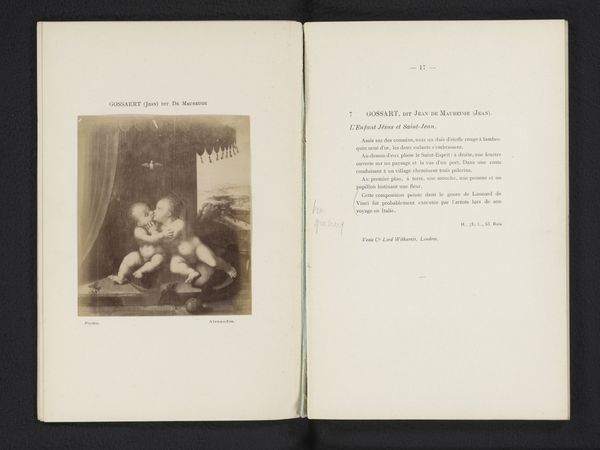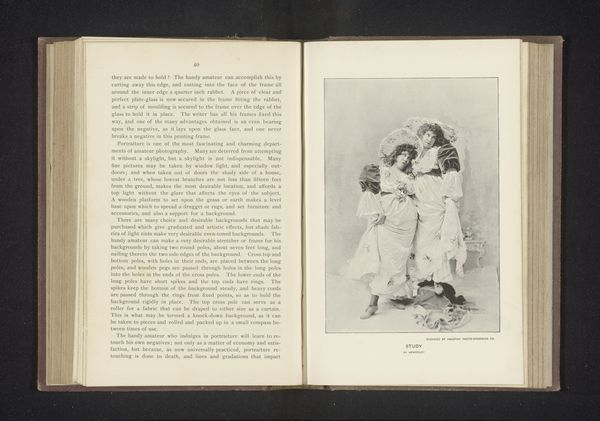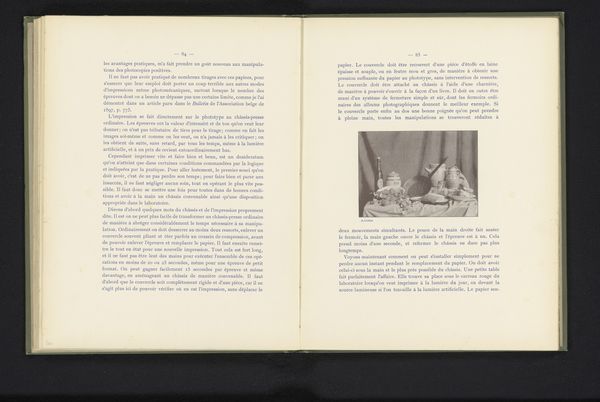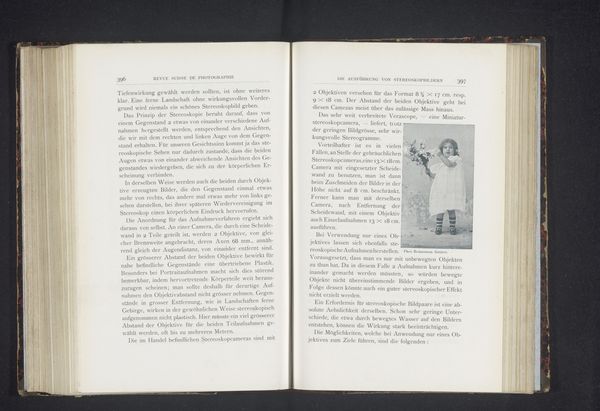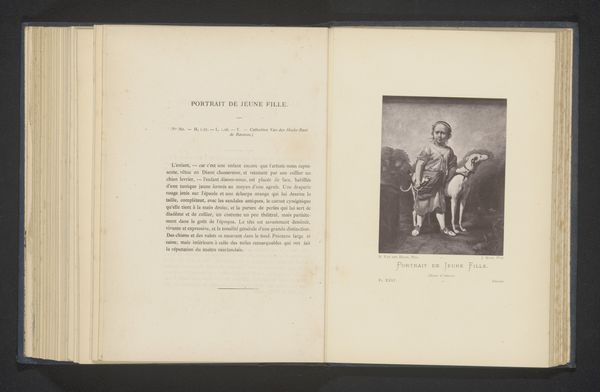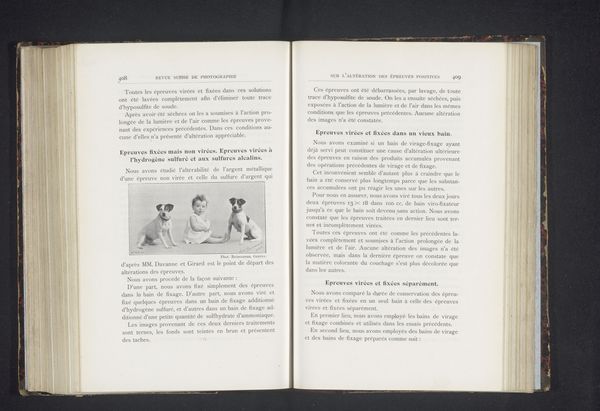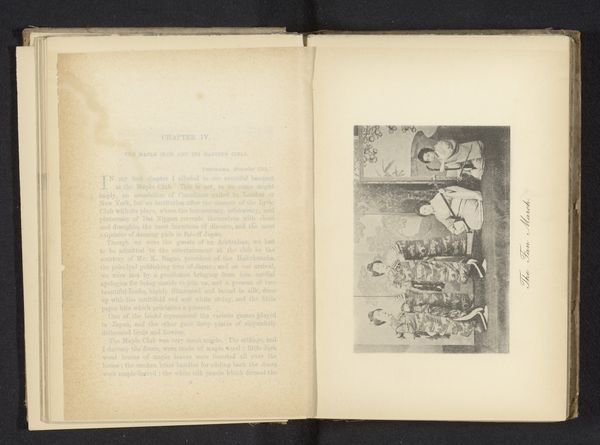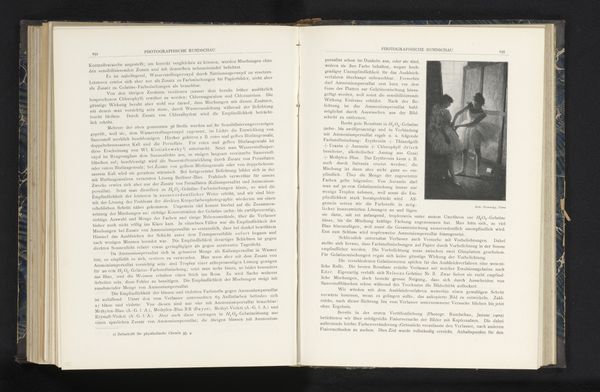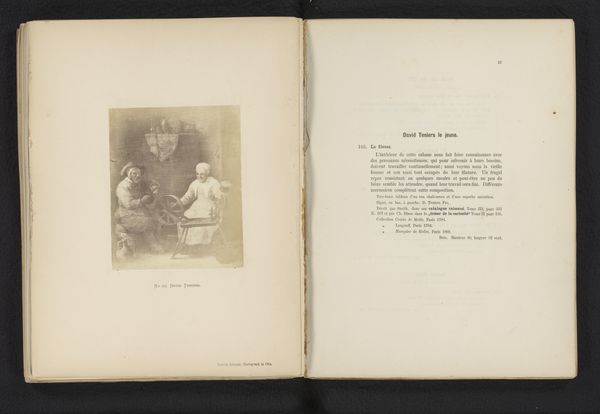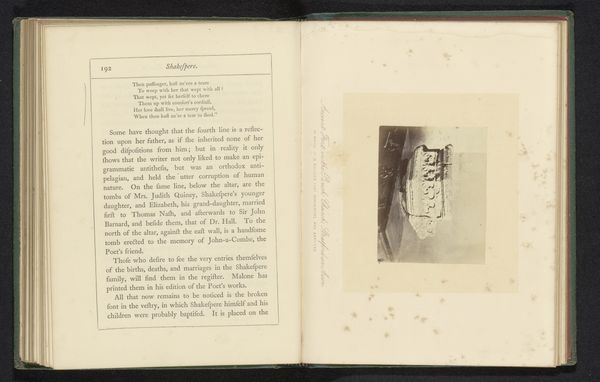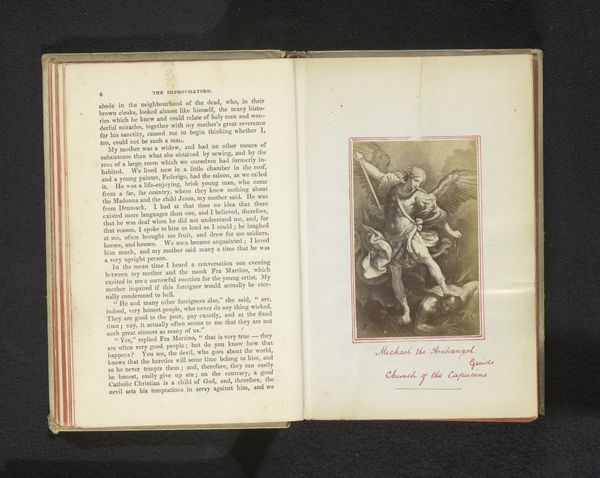
print, photography
#
portrait
# print
#
photography
#
academic-art
Dimensions: height 118 mm, width 80 mm
Copyright: Rijks Museum: Open Domain
Curator: We're looking at a page from an early photography manual, showcasing a print titled "Twee kussende kinderen" - Two Kissing Children - credited to Hermann Linck, pre-dating 1902. It seems like it's used to illustrate a principle about lenses. What catches your eye? Editor: The emotional core of the image leaps out, doesn’t it? Despite being nestled amongst dense text and diagrams, that small photographic print possesses an intimate, almost clandestine quality. It feels surprisingly tender amidst all the scientific exposition surrounding it. Curator: Yes, there’s a palpable sense of closeness and affection. Considering the era, the staged nature of the portrait, versus the almost subversive innocence. Academic art from this time frequently dealt with posed or idealized depictions. Is this academic in that sense? Editor: The composition lends itself to the reading as "Academic". These formal elements and subjects, popular since Neoclassicism, helped establish and reinforce cultural values through art. And look at this image's position on the page—isolated, almost revered. A perfect example of image acting in public service. Curator: True. We see academic formalism but also this push/pull. As an iconographer, what draws me is how Linck uses familiar archetypes - childhood innocence, affection - to possibly connect photography to then current sentiments. Editor: Absolutely. It's fascinating how quickly the public started assigning social roles to photography. And in the context of that textbook page, it suggests an emerging intersection between objective technology and subjective emotional expression, helping situate photography with visual precedents like history painting or allegory. Curator: Exactly. And, more broadly, you’re seeing the birth of visual culture—that continuous recycling and repurposing of images throughout time that helps shape society. I find myself captivated by it still. Editor: Yes, it's intriguing to reflect on the historical mechanisms of cultural elevation: How specific imagery came to represent or mirror an era’s collective consciousness, while often perpetuating or creating hierarchical boundaries in the process. I agree—it does feel compelling.
Comments
No comments
Be the first to comment and join the conversation on the ultimate creative platform.
